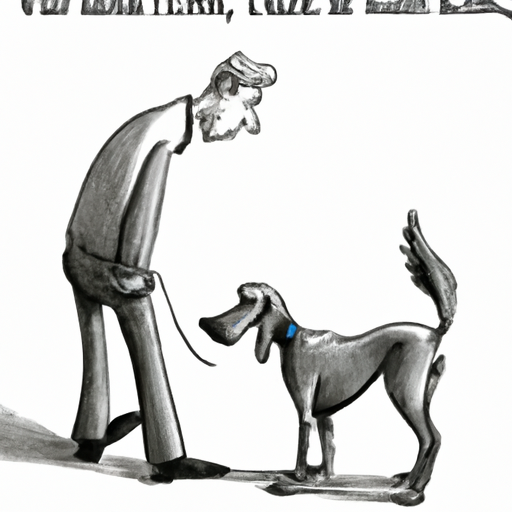As dog lovers, we often find ourselves concerned over the smallest changes in our canine companions. After all, they are much more than pets – they are family. One such change that might have caught your attention is a sudden bend in your dog’s tail. You may be wondering, “why is my dog’s tail bent?” This article delves into the possible causes and treatments for this phenomenon.
Table of Contents
- Understanding the Structure of a Dog’s Tail
- Common Causes for a Bent Tail
- How to Determine if Your Dog’s Tail is Injured
- Types of Tail Injuries
- When to See a Vet
- Ways to Prevent Tail Injuries
- FAQs
Key Takeaways
- A dog’s tail is an essential mode of communication, and a bent tail may indicate a health issue.
- Common causes for a bent tail include injury, congenital disorders, and certain breed traits.
- It’s crucial to consult a vet if your dog shows signs of pain or discomfort.
- Regular grooming and safe play can help prevent tail injuries.
Understanding the Structure of a Dog’s Tail
A dog’s tail is made up of small bones known as vertebrae, surrounded by muscles, nerves, and blood vessels. It serves various functions like balancing, swimming, and most importantly, communication. A sudden bend or twist in your dog’s tail can, therefore, be a cause for concern. It might be due to an injury, a congenital disorder, or it might just be a breed-specific trait.
Common Causes for a Bent Tail
Different factors can cause your dog’s tail to bend. Here are the most common ones:
1. Tail Cracking: Also known as “happy tail,” it’s a condition where dogs wag their tails so vigorously that they injure them, causing a bend.
2. Breed-Specific Traits: Some breeds like the Pug or Bulldog are born with naturally curled or bent tails. These are not health issues but typical breed characteristics.
3. Congenital Disorders: Some dogs are born with bent tails due to genetic disorders like Hemivertebrae, where one or more vertebrae are malformed.
4. Trauma: Accidents can cause the tail to bend or break.
5. Tail Docking: A controversial practice of reducing a dog’s tail length, often resulting in a bent tail. You can learn more about this practice here.
How to Determine if Your Dog’s Tail is Injured
Signs of a tail injury can vary, but common symptoms include a sudden change in the tail’s shape, reluctance to wag the tail, pain during touch, or difficulty sitting. Look for any swelling, bleeding, or signs of infection.
Types of Tail Injuries
There are various types of tail injuries that can result in a bent tail:
1. Fractures: A broken bone can cause the tail to bend.
2. Sprains and Strains: These are soft tissue injuries that can also lead to a bent tail.
3. Bruises and Contusions: These can occur if the tail is hit or crushed.
4. Cuts and Abrasions: These may be caused by the dog biting or scratching its tail.
In case of any injury, it’s important to seek veterinary care. You can find more about tail injuries here.
When to See a Vet
If your dog’s tail remains bent for a prolonged period, shows signs of pain, or is accompanied by other symptoms like loss of appetite or lethargy, consult a vet immediately. Early diagnosis can help avoid complications and ensure a speedy recovery.
Ways to Prevent Tail Injuries
Prevention is always better than cure. Here are some ways to prevent tail injuries:
- Keep your dog’s living area spacious and free of clutter.
- Be mindful during play to avoid tail injuries.
- Regular grooming can help prevent skin issues that might lead to tail biting or scratching.
- If your dog has a long tail, protect it from closing doors or other potential hazards.
You can find more tips on preventing tail injuries here.
FAQs
1. Why is my dog’s tail bent?
A bent tail can be caused by various factors like breed-specific traits, congenital disorders, trauma, or tail docking.
2. Should I be worried if my dog’s tail is bent?
If your dog shows signs of discomfort or pain, or the bent tail is accompanied by other symptoms, consult a vet immediately.
3. Can a bent tail be treated?
Yes, depending on the cause of the bent tail, your vet can suggest suitable treatment options.
4. How can I prevent tail injuries in my dog?
Keeping your dog’s living area free of clutter, mindful play, regular grooming, and protecting long tails from potential hazards can help prevent tail injuries.
Remember, your furry friend’s health and comfort should always be a priority. If you notice a bent tail, don’t panic. Understand the cause, seek professional help if needed, and ensure your dog feels loved and cared for, just as they do for you.



